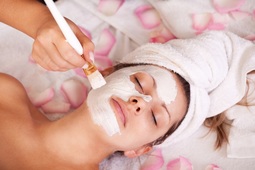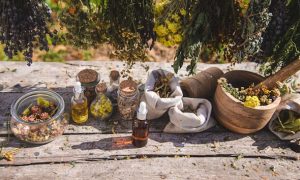The epidermis
It is composed of 6 strata that are, germinative, spiny, granulous, lucid, and disjunct. In the epidermis we find keratinocytes that we find in the stratum corneum, we also have the melanosytes responsible for giving pigmentation to the skin and are located in the germinative layer.
The dermis
This layer is deeper and is formed by connective tissue where there is an abundance of collagen and elastin and provide the skin with consistency and elasticity, this layer is divided into 2 layers, which are the papillary and the reticular layer.
In the dermis we find the following components:
- afferent nerve endings
- blood and lymphatic vessels
- Hair follicle
- sebaceous and sweat glands
- Pilo Erector Muscle
The hypodermis
It is made up of adipose and lax connective tissue. Its functions are thermal and motion regulation.
The components that make it up are:
- Cutaneous nerves
- grease
- lymphatic and blood vessels
- ligaments
The deep fascia
This layer covers the muscles so they don't expand and compress the veins.

We have different types of skin and with different characteristics, each skin has different needs, so we must learn to know our face and its care.
People's skin type can be due to family inheritance, hormones or lifestyle.
Your skin is constantly renewing, so it can change as the years go by.
In adolescence we usually have oily skin but when we advance to our maturity it becomes dry due to the loss of moisture.
The skin types are:
Oily skin
An overproduction of oil is shown in which we can see excess shine, acne, pimples and pimples.
It is noticeable in the T-zone that includes the forehead, nose and chin.
Its pores are very noticeable and oil can be seen during the day or at the end of the day, one of its advantages is that wrinkles appear later than in other skins so we recommend not completely removing oil from our skin.
Care for oily skin
Cleansing, toning and moisturizing the skin in the mornings and evenings with special products to combat oil, for example lemon and lavender help to eliminate oil and do not allow the pores to clog.
Sunscreen gel should be used daily 3 times a day.
Homemade masks recommended for oily skin.
Sage
Make an infusion and when it is cold stir with 2 tablespoons of natural yogurt and proceed to apply, leave the mask applied for 15 minutes and then rinse with plenty of water.
*It is recommended to apply once a week.
Oatmeal mask:
- 2 tablespoons oatmeal
- 2 tablespoons honey
- 1 egg yolk
Dissolve until you are in a homogeneous mixture and apply and leave for 15 minutes. Rinse with plenty of cold water.
*It is recommended to do it once a week.
Dry skin
It is more common in mature skin, although it can also be seen in young skin, this skin requires very good care because it loses its moisture very quickly.
It is characterized by looking dry, with cracks and scales especially in the cheek area, it is usually very opaque, its pores are small which show a very pleasant appearance to the eye.
One of its advantages is that it has no shine and acne on your skin.
Due to the lack of moisture, elasticity can be lost.
Care for dry skin.
Cleanse, tone and moisturize every morning and evening with special products for dry skin, use sunscreen daily, preferably cream 3 times a day.
Homemade masks recommended for dry skin.
Honey
It is applied with very clean skin and left for 15 minutes, then rinsed with plenty of water.
Cucumber
Crush the white part of the cucumber making a homogeneous mixture, apply and leave on for 15 minutes, then remove with plenty of water.
Sensitive skin
In this type of skin we can see in the cheek area that it looks red or pink, this means that it can be allergic to certain cosmetic products, that it has delicate skin and needs more care compared to the others, it is a thin and thin skin, for this reason it tends to break very easily its capillaries and veins.
Because it is so thin, it is not enough to protect the dermis and hypodermis layers, thus being a hypersensitive skin, so you must use balancing treatments to cleanse and strengthen the body from within, improving lymph and circulation. People with this skin type should have a diet rich in vitamins such as E and C.
Care for sensitive skin.
- Use natural, dermatological products that are hypoallergenic and do not use artificial fragrances.
- Deeply moisturize the areas where we see most vein rupture.
- Use high-factor sunscreen.
- Do not use water that is too cold or too hot.
Homemade masks
Carrot mask
- 2 cooked carrots
- 2 tablespoons honey
Mix until it forms a paste, apply it to the face and leave it on for 15 minutes, then rinse with plenty of water.
Oatmeal Mask
- 2 tablespoons yogurt
- 2 tablespoons oatmeal
Mix until it forms a paste and apply until dry, then rinse with plenty of warm water.
Normal skin
It is a very firm and soft skin and remains constantly hydrated, it does not have excess oil, its texture is matte color, which means that it is neither oily nor dry, however, this skin must have basic care because with age it loses its elasticity and moisture.
Care for normal skin.
- Clean it at least once a day
- Consume plenty of water and good nutrition
- Get enough rest
- Deeply hydrate

Chop the following fruits in equal amounts: strawberries, peaches and cantaloupe
Blend until you get a paste, apply to the face and neck, leave on for 20 minutes, then rinse with cold water.
Wheat germ
50 gr. of honey
40 gr. wheat germ
Mix until you make a paste, apply to the face for 5 minutes and then rinse with warm water.
To take proper care of your skin, you must identify very well what your skin type is, according to the description we made above and carry out the recommended care.










